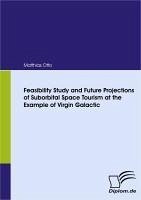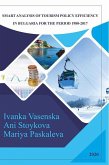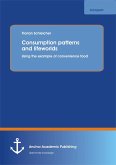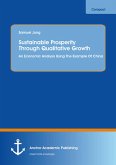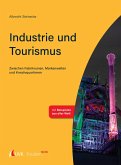Die Arbeit "Feasibility Study and Future Projections of Suborbital Space Tourism at the Example of Virgin Galactic" beschäftigt sich mit dem Thema Weltraumtourismus, insbesondere mit dem so genannten suborbitalen Weltraumtourismus - ein gegenwärtig bei Privatunternehmen zu beobachtender Trend, die kommerzielle Flüge bis zur Grenze zum Weltall anbieten. Diese Grenze, nach ihrem Entdecker Theodore von Karman "Karman Line" benannt, befindet sich laut der FAI (Fédération Aéronautique Internationale) in einer Höhe von etwa 100 km. Der Verfasser führt am Beispiel des angloamerikanischen Unternehmens Virgin Galactic eine detaillierte Machbarkeitsstudie zu diesem Phänomen durch und stellt, basierend auf den Ergebnissen dieser Studie, Zukunftsprognosen auf. Nach einer generellen Einführung in das Thema (u.a. Geschichte, Beweggründe für einen Weltraumflug, Stufen des Weltraumtourismus), widmet sich der Verfasser den Schwerpunkten der Machbarkeitsstudie. Hierbei handelt es sich im Einzelnen um eine Analyse der Vorgehensweise von Virgin Galactic und den vielversprechendsten Konkurrenten (Space Adventures, Benson Space Company, Space Access, Incredible Adventures, Rocketplane Limited, Starchaser Industries, und Blue Origin), sowie um eine Analyse der Weltraumflugschiffe und deren Hersteller. Anschließend wird der gesetzliche Rahmen am Beispiel der FAA (Federal Aviation Administration) dargestellt und es werden Ergebnisse aus Marktforschungsprojekten ausgewertet, um die Nachfrage für suborbitale Flüge zu erklären. Die Arbeit kommt zu dem Ergebnis, dass sich die Industrie zwar noch in einem Anfangsstadium befindet, aber trotzdem ein enormes Wachstumspotential aufweist. The work "Feasibility Study and Future Projections of Suborbital Space Tourism at the Example of Virgin Galactic" deals with the topic space tourism, especially with the so-called suborbital space tourism - a current trend of private businesses that offer commercial flights up to the edge of space. This edge of space, named "Karman Line" due to its founder Theodore von Karman, is defined by the FAI (Fédération Aéronautique Internationale) to be at an altitude of approximately 100 km. The author conducts a detailed feasibility study about this phenomenon at the example of the Anglo-American business Virgin Galactic, and sets up future projections based on the results of this study. After a general introduction into the topic (history, motives for going to space, stages of space tourism etc.) the author addresses the focal points of the feasibility study. In detail, this includes an analysis of the Virgin Galactic approach and its most promising competitors (Space Adventures, Benson Space Company, Space Access, Incredible Adventures, Rocketplane Limited, Starchaser Industries, and Blue Origin), as well as an analysis of the several spaceships and its manufacturers. Subsequently, the regulatory framework is illustrated at the example of the FAA (Federal Aviation Administration). In the end, results from market research projects are evaluated in order to explain the demand for suborbital flights. The study comes to the conclusion that the industry is still in an early pioneer phase, but nevertheless shows an enormous potential to grow.
Dieser Download kann aus rechtlichen Gründen nur mit Rechnungsadresse in A, B, BG, CY, CZ, D, DK, EW, E, FIN, F, GR, HR, H, IRL, I, LT, L, LR, M, NL, PL, P, R, S, SLO, SK ausgeliefert werden.

